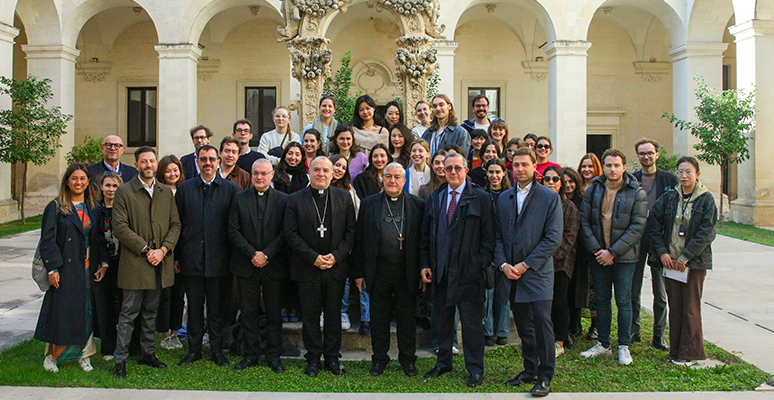The Impact of COVID 19 on the Future of Performing Arts: A Survey of Top Industry Executives in Europe and the US
The global pandemic has affected our lives on many levels, including our health and economic and social wellbeing. Cultural and creative industries have suffered, with the Performing Arts sector being the worst hit by the crisis. Owing to its nature as a cultural practice that requires the physical presence of an audience – no longer permissible under the pandemic – performance activities were among the first to cease. Regretfully, some of these institutions have not recovered from the crisis. The Performing Arts industry plays an important role from many perspectives, including its contributions to the economy and society, employment, sustainable development, tourism, education and a range of wellbeing benefits. In those countries where music and theatre are absent from school curricula, performing arts institutions fill an important gap through educational and outreach activities that help children to learn about this important cultural heritage. It was not until these activities were taken away that many came to realise the true value of live performance experience and how much they missed it during the closure.
According to UNESCO, in 2013 cultural and creative industries (CCI) worldwide generated revenues of $2250 billion and employed 29 million people, within which the Performing Arts sector alone contributed $127 billion and employed 3.5 million people. Europe and the USA represent the second and third biggest markets in CCI, accounting for 60% of global CCI revenues and employing 12.4 million people in total (Ernst and Young, 2015).
From the European perspective, the creative and cultural industries generate revenues of €536 billion, contributing 4.2% to Europe’s GDP. The sector is its third-largest employer, after construction and food and beverage sectors. More than 7 million Europeans are directly or indirectly employed in creative and cultural activities, which represents 3.3% of the EU’s active population (Ernst and Young, 2014).
The Performing Arts sector includes modern and classic dance, opera, live music, theatre and circus arts. In Europe the sector generated 32 billion euros and employed 1.2 million people in 2012, being the largest employer within the continent’s cultural and creative industries, providing more than 1 job in 6 (Ernst and Young, 2014).
The Performing Arts industry also plays an important role in attracting tourists: for example, 9.2% of tourists visiting the UK went to a theatre, a musical, opera or ballet. The richness of cultural heritage in many European countries is strengthened by the dynamism of contemporary theater and music (Ernst and Young, 2015).
Research suggests that public arts have a positive impact on community engagement: the chances that performing arts attendees will volunteer are 3.8 times greater than for non-attendees, regardless of their educational attainment, gender, and other selected demographic traits, and similar results applied to the relationship between arts participation and community meetings (Crossick and Kaszynska, 2016). The difference in levels of civic engagement was even greater for those who themselves created or performed art, as opposed to simply attending.
Considering the importance of the industry and its current vicissitudes, a group of Master’s students at Bocconi University (Thais Fagundes, Dina Ivanova and Matteo Azzolini), supervised by Professor Andrea Rurale, have conducted a research project to analyze the impact of the Covid-19 pandemic on the Performing Arts sector, in particular by interpreting the feelings and overall outlooks of a representative selection of its executives. Questions focus on the future of the sector, ultimately seeking to understand how institutions might rethink their post-pandemic strategies.
41 performing arts institutions participated in the project across 6 countries (France, Germany, Italy, Spain, UK and USA). These included opera and prose theaters, auditoriums, music halls, orchestras, festivals, performing arts foundations and other performing arts institutions. The data was collected through a sentiment survey and analysis of institutions’ financial data, where that information was available. Respondents included leading institutions of the sector (e.g. La Scala Theatre in Italy, Royal Opera House and Edinburgh Festival in the UK, and Deutsche Staatsoper Berlin in Germany).
93% of the sample reported that COVID-19 had had a significant impact on their institution. In the first six months of 2020 the revenues, number of performances and new production titles on average reduced by half compared to the same period in 2019 (a drop of 51% in revenues, 56% in performances, 49% in new production titles), while the number of full-time employees fell by 12%.
In response to COVID-19, the top 3 factors that institutions most worried about are economic uncertainty, sanitary restrictions to performances, and the lack of audiences to attend live events. To a lesser extent, some institutions also reported concerns about financial problems, the unavailability of public grants and funds, and a lack of resources to invest in digital activities.
While both European and American institutions have been negatively impacted by the pandemic, its severity varies between Europe and the US. In Europe, the survey shows the following areas as suffering the worst impact, in order of priority: number of performances, new productions and revenues. In the US, on the other hand, the areas most affected are revenues, performances and number of full-time employees. The different impacts on revenues are likely to be due to different business models in these territories. The largest gap is reported to be in the % change of the number of full-time employees, which reflects far greater redundancies in the US than in Europe (the number of full-time employees has decreased by 2% in Europe, in contrast to 42% in the US).
The research has shown a high level of concern among performing arts institutions, with 58% of European and 80% of American top executives being worried about the financial position of their organization. Differences in the revenue models affect the two geographic areas. Given their heavier reliance on direct revenues, US institutions’ incomes were more severely impacted by COVID-19 closures and restrictions. For them, the average reported decrease in revenues in the first half of 2020 as compared to 2019 equates to 68%, compared to 46% in Europe. As European institutions receive a larger share of public funding (on average 56% of total revenues vs. 16% in the US), they could rely on a more secure ‘safety net’ during the crisis.
Private funding has had a stronger positive impact on innovation and, as US institutions rely on it to a larger extent, they appear to manifest a stronger tendency towards innovation. The research shows that the higher the dependence on both public and private funding, the higher the institutions’ willingness to change. Surprisingly, there is a lightly reversed trend showing that the higher the dependence on direct revenues, the lower the perceived need for change.
As far as skills and competencies are concerned, the institutions across the board reported that the top 3 skills that they are currently lacking are digital competences, infrastructure and technology, and business partnerships. Going forward, the institutions believe the top 5 competencies required for the future of the Performing Arts sector are audience engagement, digital competencies, marketing and communication, new managerial approaches, and fundraising. Regional differences were apparent, with fundraising skills seen as more necessary in the US as compared to Europe. This can be linked to American institutions being less reliant on public funds, and thus having a greater need to find other private funding sources. Executives in both territories saw audience engagement and marketing as a necessity, whereas European institutions appeared to place more emphasis on digital competencies than their US counterparts.
The research has demonstrated that 9 out of 10 executives reported a strong negative impact of Covid-19 on their organisation. Although perhaps expected, this number illustrates how severely the Performing Arts sector has been hit by the pandemic. This sector is historically heavily constrained by the ‘technology’ of the live performance and consequential limitations for productivity improvements and labour-saving innovations, against the rising costs of living and salaries (the so called Baumol effect), since the end product is essentially the labour of the performer. The pandemic has aggravated this still further.
Revenue models significantly differ between the two territories considered, with Europe being generally more reliant on public funds in comparison with the US. The differences in the effect of the crisis on American and European institutions argue strongly for the importance of government support for the survival of the sector. At the same time, the research shows that private funding stimulates innovation in institutions, which could be crucial for their long-term success.
While industry executives believe that audience engagement, marketing and digital competencies are important for the future of the sector, it was surprising to see that business partnerships occupied the last place on the list of priorities, despite a potential for bringing in additional revenue streams and achieving a more balanced financial position.
Finally, the results of this research indicate that it may be necessary for the Performing Arts sector to initiate a debate on the need to rethink strategies and business models, to ensure both economic survival and versatility through innovation. In light of the fast-changing and uncertain environment the institutions find themselves in, the ability to adapt is needed now and will become even more relevant going forward. The key question is whether the organisations have the resources and the people with necessary competencies and skills to adapt to these changes and thus to survive the current crisis. In the countries where the sector is highly regulated this may bring additional challenges, and the flexibility of the policy makers and regulating bodies is crucial for the success of this process. To provide a competitive digital offering, organisations need to invest funds they do not currently have and may need to retrain the staff or recruit new employees. This also requires financial resources and will take time.
It remains clear that the Performing Arts sector is important for the economy, education and wellbeing of our society. It has survived throughout centuries of wars and crises and deserves to be put at the centre of recovery plans going forward.
References:
Crossick, G. and Kaszynska, P., 2016. Understanding The Value Of Arts & Culture.
Swindon: Arts and Humanities Research Council.
Ernst and Young, 2014. Creating Growth. Measuring Cultural And Creative Markets In The EU.
Ernst and Young, 2015. Cultural Times. The Global Map Of Cultural And Creative Industries.
>>Download the Report: THE IMPACT OF COVID-19 ON THE PERFORMING ARTS SECTOR
>>Download the Executive Summary: THE IMPACT OF COVID-19 ON THE PERFORMING ARTS SECTOR
SDA Bocconi School of Management
MAMA turns 10: a conversation with new ...

Shaping the Future Leaders of Arts ...




